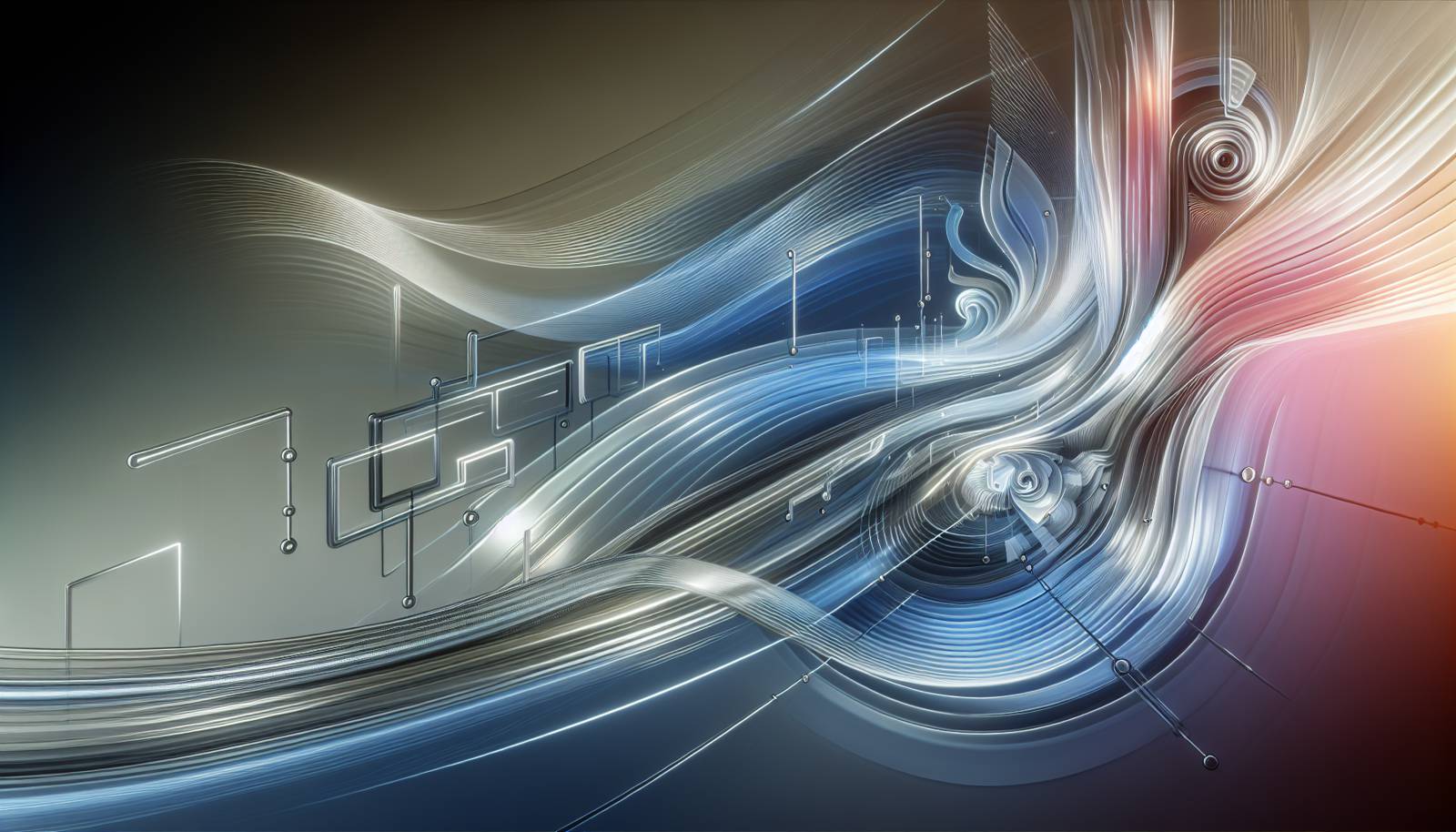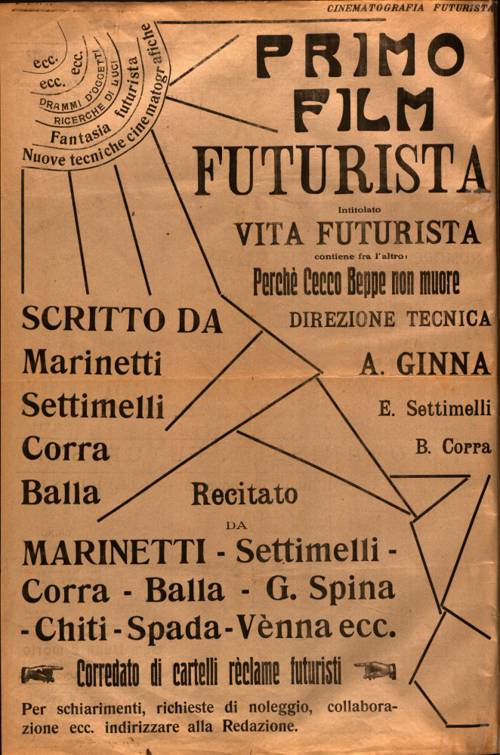
FAQ About The Influence of Futurism on Film Aesthetics

What is Futurism and how did it originate?
Futurism was an avant-garde art movement founded in Italy in the early 20th century, emerging around 1909. Championed by figures like Filippo Tommaso Marinetti, it sought to capture the dynamism, energy, and speed of modern technology and industry. Initially influencing painting and sculpture, Futurism emphasized themes of motion, technology, and modernity, inevitably influencing other mediums, including film.

How has Futurism influenced film aesthetics?
Futurism has significantly influenced film aesthetics by introducing themes of industrialization, technology, and dynamism into visual storytelling. Its focus on speed, movement, and the future has inspired filmmakers to create visually stunning depictions of futuristic cities, advanced technology, and dynamic action sequences. The aesthetic often includes sleek lines, metallic colors, geometric shapes, and innovative use of light and shadow.

Which are some iconic films influenced by Futurism?
Several iconic films showcase the influence of Futurism on their aesthetic. Notably, Fritz Lang's Metropolis (1927) reflects Futurist themes with its futuristic cityscape and advanced machinery. Other films, such as Ridley Scott's Blade Runner (1982) and Luc Besson's The Fifth Element (1997), also draw from Futurist ideas, especially in their set designs and depictions of future urban environments.

What are common visual elements in Futurist-inspired films?
Futurist-inspired films often feature visual elements that emphasize speed, motion, and the impact of technology. These elements include streamlined forms, geometric structures, bold use of metal and glass, and innovative light play. The imagery typically reflects stark contrasts, dynamic compositions, and an emphasis on industrial and urban landscapes.

How do Futurism and science fiction genres overlap in film?
Futurism and science fiction genres overlap significantly in film, particularly in their exploration of advanced technology, futuristic settings, and philosophical questions about progress and humanity. Both often portray visionary worlds that push the boundaries of current technology and society. Films influenced by both Futurism and science fiction typically blend visual artistry with speculative storytelling to create immersive and thought-provoking narratives.

Has Futurism only impacted science fiction films?
While Futurism predominantly influences science fiction films, its impact isn't confined to this genre. Elements of Futurism are evident in action films, dystopian narratives, and even some animated movies. The movement’s emphasis on modernity and movement can be seen in various forms of visual media where the depiction of future technology enhances narrative storytelling, regardless of genre.

How did the themes of speed and technology from Futurism translate into films?
The themes of speed and technology from Futurism translate into films through the depiction of high-paced action sequences, advanced technological gadgets, and fast-paced editing styles. Directors use techniques like rapid camera movements, montage editing, and special effects to convey a sense of urgency and constant motion characteristic of Futurist art.

What role does set design play in films influenced by Futurism?
Set design plays a crucial role in films influenced by Futurism by helping to create immersive worlds that reflect Futurist ideals. Designers often use futuristic architecture, metallic and reflective surfaces, and intricate machinery to construct settings that represent an advanced technological future. The imaginative and sometimes exaggerated urban landscapes serve as a visual centerpiece that enhances narrative themes and storytelling.

Are there any notable directors known for incorporating Futurist aesthetics in their films?
Directors such as Fritz Lang, Ridley Scott, and George Lucas are renowned for incorporating Futurist aesthetics in their films. Fritz Lang's Metropolis is one of the earliest examples, while Ridley Scott's Blade Runner represents a later iteration of these aesthetics. George Lucas's Star Wars franchise has also been noted for its innovative visual designs that echo the Futurist aesthetic, incorporating advanced technology and futuristic landscapes.

How do filmmakers convey the Futurist concept of movement and dynamism?
Filmmakers convey the Futurist concept of movement and dynamism by employing dynamic camera work, fast-paced editing, and kinetic special effects. Techniques like tracking shots, jump cuts, and energetic sequences of action scenes are utilized to impart a sense of motion and urgency. This creates a visual rhythm that mirrors the vibrancy and energy central to Futurist philosophy.

What are the differences between Futurism and other art movements influencing film aesthetics?
Futurism differs from other art movements like German Expressionism and Surrealism in its emphasis on speed, technology, and modernity. While Expressionism focuses on emotional experiences and Surrealism explores the unconscious mind, Futurism celebrates technological advancements and the dynamism of the modern world. This distinct focus results in unique aesthetic choices when translating these movements into film.

How are lighting and color used in Futurist-inspired films?
Lighting and color in Futurist-inspired films often incorporate stark contrasts, metallic hues, and neon highlights to emphasize artificiality and modern technology. Directors may use vibrant, contrasting colors to delineate different spaces or themes within a film, while dramatic lighting effects underscore the innovative use of technology. These techniques help create a visually stunning and futuristic atmosphere.

In what ways has digital technology facilitated the expression of Futurist aesthetics in modern filmmaking?
Digital technology has significantly facilitated the expression of Futurist aesthetics in modern filmmaking by enabling advanced special effects, CGI, and versatile editing techniques. These tools allow filmmakers to create intricate, futuristic worlds and dynamic visual compositions that embody the speed and modernity celebrated by Futurism. Moreover, digital effects offer flexibility in exploring new visual styles and pushing the boundaries of traditional filmmaking.

Can Futurist aesthetic principles be found in animation?
Yes, Futurist aesthetic principles can be found in animation, as seen in works that emphasize speed, technological progress, and dynamic visuals. Animated films and series often utilize bold designs, intricate mechanics, and fluid motion, characteristic of Futurist art. Japanese anime, in particular, frequently embodies these elements, creating visually impactful and futuristically themed narratives.

How do Futurist aesthetics impact the storytelling aspect of a film?
Futurist aesthetics impact storytelling by framing the narrative within a context of advanced technology and rapid change. The visual language of Futurism—marked by dynamic settings and innovative designs—often supports themes of progress, conflict, and existential queries about the impact of technology on humanity. This aesthetic elevates not only the visual but also the thematic depth of the story.

What elements from Futurism are most commonly seen in science fiction cinema?
In science fiction cinema, common elements from Futurism include advanced urban environments, cutting-edge technology, streamlined vehicles, and augmented human-machine interactions. These elements portray a world constantly in motion and evolving, reflecting the Futurist fascination with future possibilities and technological progress. Such representations reinforce the genre’s speculative and visionary nature.

Are there any films that explicitly reference Futurist manifestos or ideologies?
While few films explicitly reference Futurist manifestos or ideologies, many incorporate themes closely aligned with the movement’s principles, such as the glorification of modernity and technology. Films that explore the consequences of technological advancement or feature dystopian views of the future often parallel themes found in Futurist writings, even if not direct references.

How do set designers and cinematographers collaborate to achieve Futurist aesthetics?
Set designers and cinematographers collaborate closely to achieve Futurist aesthetics by integrating visionary set designs with dynamic camera techniques. Designers create sets that embody the sleek, modern visions of Futurism, while cinematographers use lighting, angles, and movement to enhance these elements on screen. Their collaboration results in visually striking representations of futuristic worlds.

What are some misconceptions about Futurism's impact on film?
A common misconception about Futurism's impact on film is that it pertains only to science fiction genres. In reality, Futurist aesthetics have influenced a range of film genres, including action and noir, where themes of modernity and technological advancement create dynamic visual storytelling. Additionally, it’s often thought that only early films were influenced by Futurism, whereas its impact is ongoing and continually evolving in contemporary cinema.

What challenges do filmmakers face when incorporating Futurist aesthetics?
Filmmakers face challenges such as balancing the aesthetic appeal of Futurist designs with practical storytelling needs and ensuring that the futuristic elements serve the narrative rather than overpowering it. Budgetary constraints can also limit the elaborate production designs characteristic of Futurist aesthetics. Furthermore, integrating advanced digital effects while maintaining a coherent and engaging story presents an additional layer of complexity.
